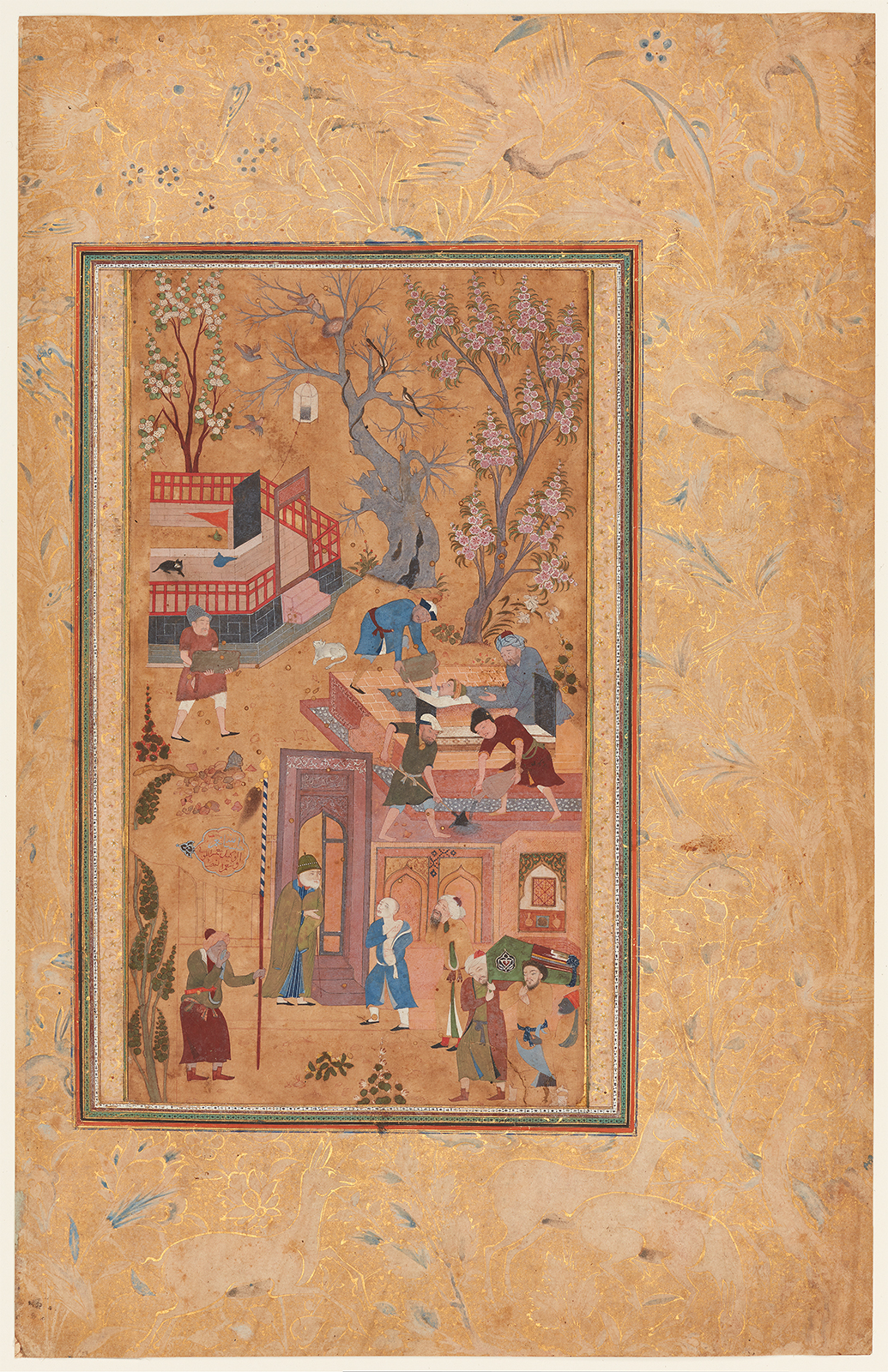Click on the image to zoom
The Son Who Mourned His Father
- Accession Number:AKM206
- Creator:Artist (painter attributed): Sahifa Banu
- Place:India, Agra
- Dimensions:22.3 cm x 12.2 cm
- Date:ca. 1620
- Materials and Technique:opaque watercolour and gold on paper
This scene illustrates a story from a Persian poem called Mantiq al-Tair (Language of the Birds), in which a hoopoe bird relates a series of metaphorical stories in order to instruct his fellow birds. In this instance, he tells the story of a son mourning his father in response to a bird who expresses his fear of death.
Further Reading
The painting has been attributed to the artist Sahifa Banu, a 17th-century artist from northern India, based on its resemblance to a painting attributed to her by the emperor Jahangir.[1] In its form, it copies a late 15th-century painting possibly by Bizhad (d. ca. 1535), the legendary Iranian artist, that is part of a manuscript copy now in the Metropolitan Museum of Art.[2] That manuscript once belonged to Shah ‘Abbas of Iran (r. 1587–1629), who donated it to the Ardabil shrine in 1609. The manuscript is presumed to have stayed there until the shrine was sacked in 1826; therefore, how Sahifa Banu learned of its painting is unknown. Perhaps copies were made in Iran, which later found their way to the Mughal court and into the hands of artists there. At least one other Indian copy from the manuscript is known.[3]
— Marika Sardar
Notes
[1] Painting, Shah Tahmasp of Iran, by Sahifa Banu, opaque watercolour and gold on paper, Mughal, early 17th century, Victoria & Albert Museum, IM 117-1921.
[2] "Funeral Procession", Folio 35r from a Mantiq al-tair (Language of the Birds), Sultan 'Ali al-Mashhadi (active late 15th–early 16th century); dated A.H. 892/ A.D. 1487; Made in present-day Afghanistan, Herat; Opaque watercolor, silver, and gold on paper; The Metropolitan Museum, 63.210.35.
[3] Khalili Collection, London, MSS 980.
References
Yumiko Kamada, "An Illustrated Manuscript of Mantiq al-Tayr in the Metropolitan Museum of Art," Orient 45 (2010): 129–76.
Painting, Shah Tahmasp of Iran, by Sahifa Banu, opaque watercolour and gold on paper, Mughal, early 17th century, Victoria & Albert Museum, IM 117-1921. http://collections.vam.ac.uk/item/O405633/shah-tahmasp-of-iran-painting-banu-sahifa/
"Funeral Procession", Folio 35r from a Mantiq al-tair (Language of the Birds), Sultan 'Ali al-Mashhadi (active late 15th–early 16th century); dated A.H. 892/ A.D. 1487; Made in present-day Afghanistan, Herat; Opaque watercolor, silver, and gold on paper; The Metropolitan Museum, 63.210.35. https://www.metmuseum.org/art/collection/search/451730
Note: This online resource is reviewed and updated on an ongoing basis. We are committed to improving this information and will revise and update knowledge about this object as it becomes available.


